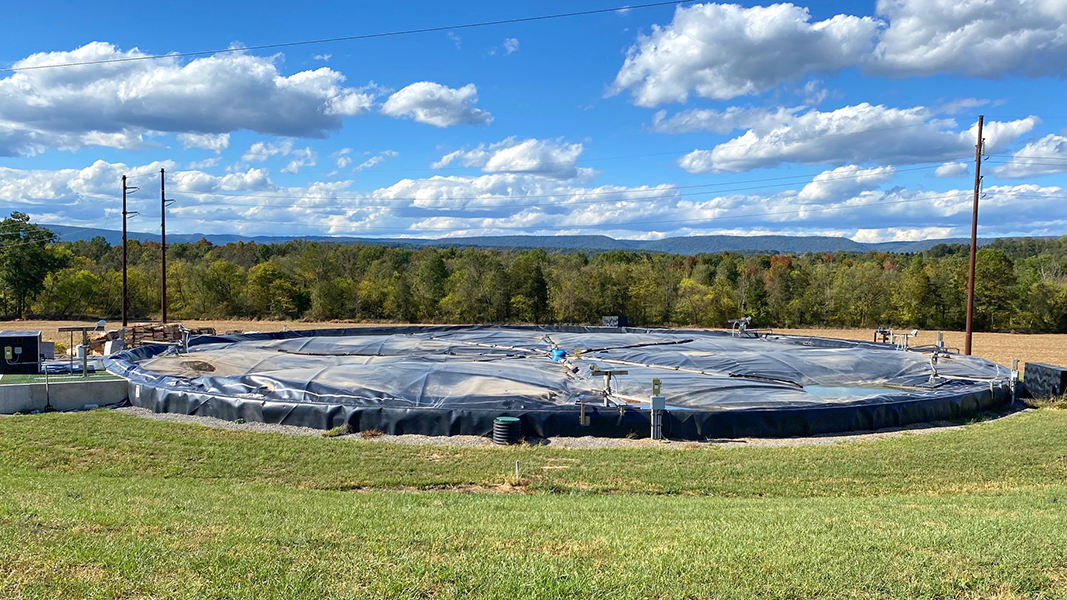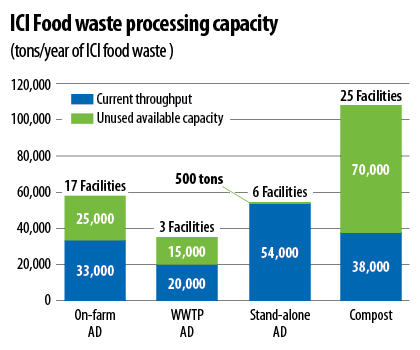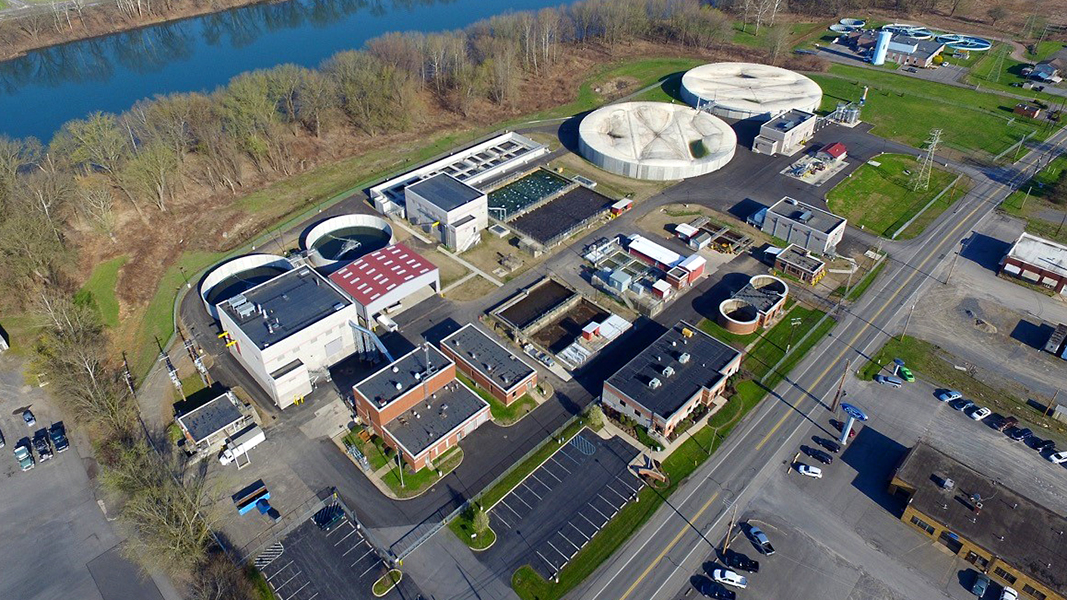Top: Milton Regional Sewer Authority in Milton (PA) codigests industrial food processing residuals. Photo courtesy of MRSA
The Pennsylvania Department of Environmental Protection (PADEP) released the “Pennsylvania Food Waste to Renewable Energy Assessment” in late December. “The assessment is a first of its kind attempt to understand the amount of industrial, commercial, and institutional (ICI) food waste diverted via anaerobic digestion (AD) and composting in Pennsylvania,” explains Robert Young, Energy Program Specialist at PADEP. “Prior to this assessment, no publicly available dataset comprehensively identified all AD and composting facilities processing ICI food waste or documented the amounts accepted and the additional capacities available.” The assessment was conducted by MSW Consultants and Coker Composting and Consulting; BioCycle was responsible for the case studies in the report.
Key report components include:
- Estimation of the quantities of food waste generated by ICI sources within Pennsylvania
- Analysis of the amount of ICI food waste currently processed by existing AD and composting facilities and the ability of these facilities to increase food waste processing capacity
- Analysis of the greenhouse gas (GHG) reduction opportunities and renewable energy generation potential associated with ICI food waste processing
- Case studies of six ICI food waste generators and processors to identify challenges, best practices, and success stories
- A database of all ICI food waste generators and processors evaluated during the assessment in GIS format to allow for further analysis of local and regional food waste reduction initiatives

Reinford Farms in Mifflintown (PA) receives ICI food waste that is codigested with dairy manure. Photo courtesy of Reinford Farms
The analysis of food waste generation focused on ICI establishments estimated to generate at least 52 tons/year (or one ton per week) of food waste. The assessment estimates that nearly 2 million tons of food waste are generated annually at Pennsylvania ICI establishments producing more than 52 tons/year; over half (1.2 million tons) are generated by food manufacturers and processors. Those falling in the 52 tons/year or greater category represent 14% of all ICI establishments and account for approximately 73% of all ICI food waste generated statewide (2.7 million tons). The assessment notes that a significant portion of this food waste is likely diverted to animal feed, food donation, and direct land application; however, this study focused only on quantifying the amounts diverted to AD and composting.
 Based on the surveys of AD and composting facilities, an estimated 145,000 tons of ICI food waste are currently diverted each year via these processors (see figure). Additionally, survey respondents reported that an estimated 111,000 additional tons of processing capacity is either immediately available or could be made available through changes in their permit limits and/or a shift in the current economics of organics recycling. “Processing capacity” refers collectively to the amount of capacity currently utilized (“current food waste throughput”) and the additional amount of food waste that could be processed using current infrastructure (i.e., “unused available capacity”). Data in the assessment further break down AD capacity based on whether the digester is located on a farm, a wastewater treatment plant (WWTP), or at a food manufacturing or other industrial-type site (stand-alone), as shown in figure.
Based on the surveys of AD and composting facilities, an estimated 145,000 tons of ICI food waste are currently diverted each year via these processors (see figure). Additionally, survey respondents reported that an estimated 111,000 additional tons of processing capacity is either immediately available or could be made available through changes in their permit limits and/or a shift in the current economics of organics recycling. “Processing capacity” refers collectively to the amount of capacity currently utilized (“current food waste throughput”) and the additional amount of food waste that could be processed using current infrastructure (i.e., “unused available capacity”). Data in the assessment further break down AD capacity based on whether the digester is located on a farm, a wastewater treatment plant (WWTP), or at a food manufacturing or other industrial-type site (stand-alone), as shown in figure.
Download the report at this link













